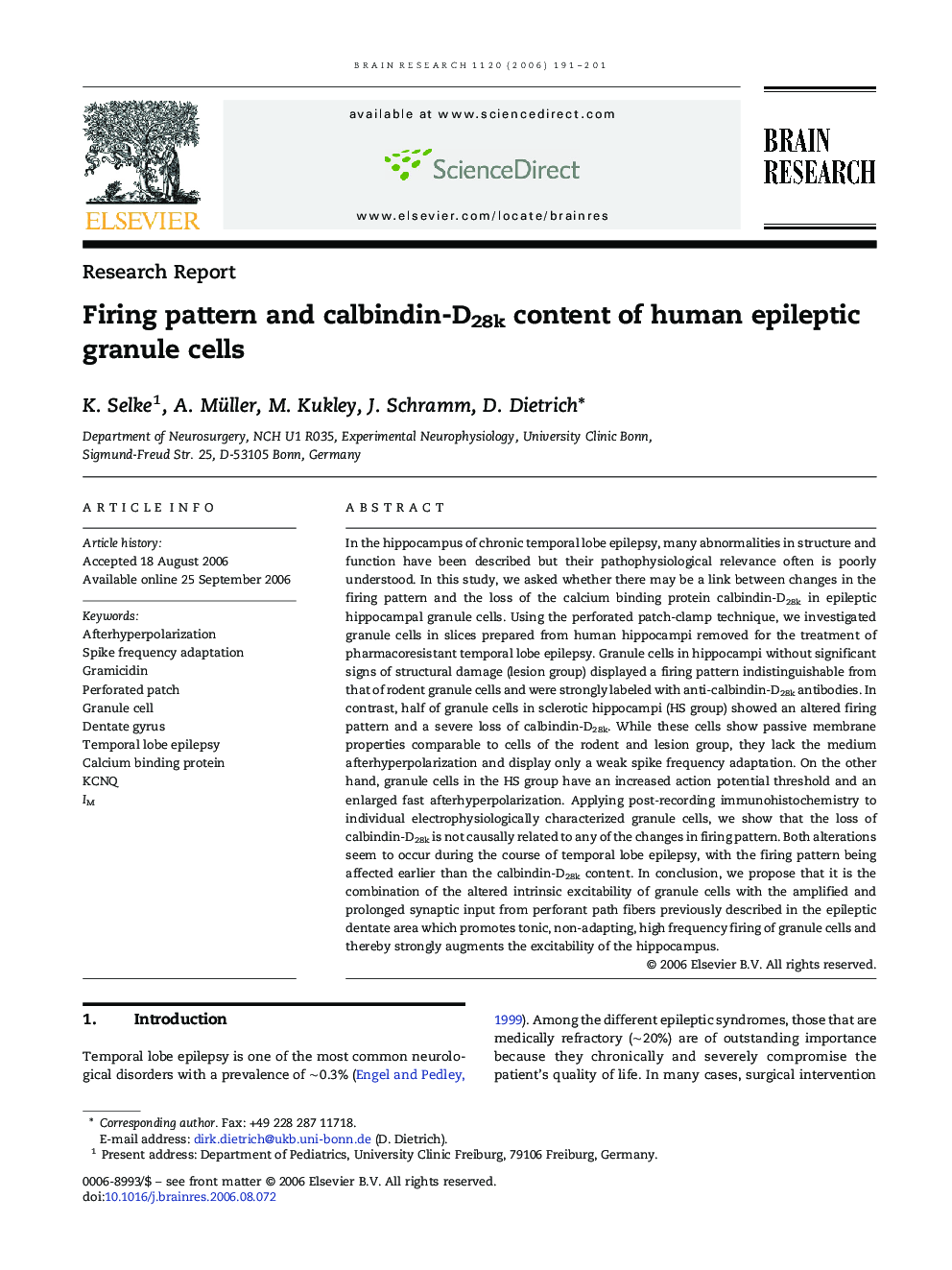| کد مقاله | کد نشریه | سال انتشار | مقاله انگلیسی | نسخه تمام متن |
|---|---|---|---|---|
| 4331802 | 1614313 | 2006 | 11 صفحه PDF | دانلود رایگان |

In the hippocampus of chronic temporal lobe epilepsy, many abnormalities in structure and function have been described but their pathophysiological relevance often is poorly understood. In this study, we asked whether there may be a link between changes in the firing pattern and the loss of the calcium binding protein calbindin-D28k in epileptic hippocampal granule cells. Using the perforated patch-clamp technique, we investigated granule cells in slices prepared from human hippocampi removed for the treatment of pharmacoresistant temporal lobe epilepsy. Granule cells in hippocampi without significant signs of structural damage (lesion group) displayed a firing pattern indistinguishable from that of rodent granule cells and were strongly labeled with anti-calbindin-D28k antibodies. In contrast, half of granule cells in sclerotic hippocampi (HS group) showed an altered firing pattern and a severe loss of calbindin-D28k. While these cells show passive membrane properties comparable to cells of the rodent and lesion group, they lack the medium afterhyperpolarization and display only a weak spike frequency adaptation. On the other hand, granule cells in the HS group have an increased action potential threshold and an enlarged fast afterhyperpolarization. Applying post-recording immunohistochemistry to individual electrophysiologically characterized granule cells, we show that the loss of calbindin-D28k is not causally related to any of the changes in firing pattern. Both alterations seem to occur during the course of temporal lobe epilepsy, with the firing pattern being affected earlier than the calbindin-D28k content. In conclusion, we propose that it is the combination of the altered intrinsic excitability of granule cells with the amplified and prolonged synaptic input from perforant path fibers previously described in the epileptic dentate area which promotes tonic, non-adapting, high frequency firing of granule cells and thereby strongly augments the excitability of the hippocampus.
Journal: Brain Research - Volume 1120, Issue 1, 20 November 2006, Pages 191–201